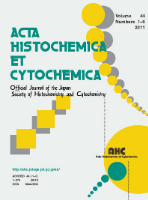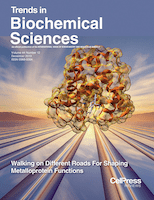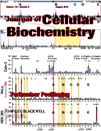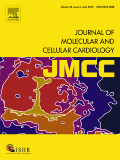
ACTA HISTOCHEMICA ET CYTOCHEMICA
Scope & Guideline
Connecting Scholars through Histochemical Insights
Introduction
Aims and Scopes
- Histochemical and Cytochemical Techniques:
The journal emphasizes the development and application of histochemical and cytochemical techniques to visualize cellular components, providing insights into the morphology and function of tissues. - Disease Mechanisms and Pathophysiology:
A core focus is on elucidating the mechanisms underlying various diseases, particularly cancer and neurodegenerative disorders, through detailed histological and cytological analyses. - Molecular Biology and Cellular Signaling:
Research often explores molecular interactions and signaling pathways, utilizing advanced techniques such as immunohistochemistry and transcriptomics to study gene expression and protein localization. - Comparative Studies across Species:
The journal publishes comparative studies examining histological features across different animal models, enhancing understanding of disease processes and potential therapeutic targets. - Innovative Imaging Techniques:
There is a consistent focus on novel imaging methodologies, including advanced microscopy and multi-omics approaches, that contribute to the detailed characterization of tissues and cells.
Trending and Emerging
- Neurodegenerative Disease Research:
There is a growing emphasis on studies related to neurodegenerative diseases, particularly Alzheimer's and Parkinson's diseases, highlighting the importance of understanding molecular changes and potential therapeutic targets in these conditions. - Cancer Biomarkers and Therapeutics:
Research focusing on the identification and validation of cancer biomarkers, as well as exploring novel therapeutic targets, has gained traction, reflecting the increasing relevance of personalized medicine. - Multi-Omics Approaches:
An emerging trend is the use of integrated multi-omics studies, which combine transcriptomics, proteomics, and metabolomics to provide comprehensive insights into disease mechanisms and tissue responses. - Immunohistochemistry in Clinical Applications:
There is an increasing trend in applying immunohistochemical techniques for clinical diagnostics and prognostics, particularly in cancer research, underlining the practical relevance of histochemistry in healthcare. - Environmental and Lifestyle Factors in Disease:
Recent studies are beginning to explore the impact of environmental and lifestyle factors on histological changes, indicating a shift towards understanding the broader context of disease beyond genetic predispositions.
Declining or Waning
- Traditional Histological Techniques:
There is a noticeable decline in studies relying solely on traditional histological techniques without the integration of newer molecular or imaging methods, as the field evolves toward more sophisticated approaches. - General Cytopathology:
Research that broadly addresses cytopathological findings without a specific focus on molecular mechanisms or disease relevance has become less frequent, as the journal shifts towards more targeted studies. - Basic Histological Descriptions:
Papers providing only descriptive histological data without accompanying functional insights or implications for health and disease are appearing less often, reflecting a trend toward more analytical and mechanistic research.
Similar Journals

Medical Molecular Morphology
Advancing Understanding in Cellular Structures.Medical Molecular Morphology, published by SPRINGER JAPAN KK, stands as a significant resource in the fields of medicine and molecular biology, bridging critical insights between histological studies and modern therapeutic approaches. With an ISSN of 1860-1480 and E-ISSN of 1860-1499, this journal has evolved since its inception in 1996 and has continued to provide a platform for innovative research through 2024, establishing its relevance particularly in the realms of medical pathology and molecular morphology. Although categorized as Q3 in Medicine (miscellaneous) and Q4 in Molecular Biology per the 2023 quartiles, the journal's unique contributions cannot be understated, as evidenced by its Scopus rankings, which place it in the 52nd percentile for Pathology and 19th percentile for Molecular Biology. The journal’s mission focuses on disseminating valuable findings that enhance the understanding of cellular and molecular structures and their implications in health and disease. As access options are not currently open access, it remains essential for professionals and researchers to consider the journal's contributions as they pursue academic growth and impactful research in these dynamic fields.

TRENDS IN BIOCHEMICAL SCIENCES
Navigating the Evolving Landscape of BiochemistryTRENDS IN BIOCHEMICAL SCIENCES is a premier academic journal published by CELL PRESS, focusing on the latest advancements and insights in the dynamic fields of biochemistry and molecular biology. With an ISSN of 0968-0004 and an E-ISSN of 1362-4326, this journal has established itself as a leading source of high-impact research, boasting an impressive Q1 category ranking in both Biochemistry and Molecular Biology as of 2023. The journal's Scopus Ranks further highlight its significance, placing it in the top 3% and 4% of its respective fields, emphasizing its role as a vital platform for disseminating innovative research. Published since 1976 and continuing through 2024, TRENDS IN BIOCHEMICAL SCIENCES provides a comprehensive overview of the latest trends, methods, and applications, helping researchers, professionals, and students stay at the forefront of their disciplines. Although it offers traditional access options, the journal's rich content and authoritative analysis make it a must-read for those pursuing cutting-edge biochemical research.

JOURNAL OF CELLULAR BIOCHEMISTRY
Exploring the Intricacies of Cellular ProcessesJournal of Cellular Biochemistry is a premier academic journal dedicated to advancing the field of biochemistry and cellular biology. Published by Wiley, this influential journal has a significant impact factor that underscores its relevance and authority within the scientific community. With its ISSN 0730-2312 and E-ISSN 1097-4644, the journal has been on the frontier of research since its inception in 1982, and is expected to continue publishing cutting-edge studies through 2024. As evidenced by its ranking in the 2023 Scopus Quartiles, it holds a rank of Q2 in Biochemistry and Q3 in both Cell and Molecular Biology, placing it among the top tiers of scientific journals in these disciplines. The Journal of Cellular Biochemistry serves as a vital resource for researchers, professionals, and students alike, providing a platform for the dissemination of innovative ideas and findings that shape our understanding of cellular processes and biochemical pathways. Though it does not currently offer Open Access options, its robust peer-review process ensures that each publication meets the highest academic standards, thus solidifying its esteemed position in the landscape of biochemical research.

JOURNAL OF BIOLOGICAL CHEMISTRY
Unveiling Molecular Mysteries, One Study at a TimeJOURNAL OF BIOLOGICAL CHEMISTRY, published by Elsevier, is a premier interdisciplinary journal dedicated to advancing our understanding of biochemistry, cell biology, and molecular biology. With a prestigious history dating back to 1945 and an impressive convergence of research expected to continue through 2024, this journal holds a Q1 ranking in all three of its core categories, signaling its critical influence in the respective fields, supported by a robust Scopus ranking that places it among the top echelons of internationally recognized research. Although currently not available as Open Access, the journal is essential for researchers and professionals looking to stay abreast of the latest breakthroughs and innovations in biochemical research. With a deep commitment to scientific rigor and a focus on diverse topics ranging from cellular processes to molecular mechanisms, the Journal of Biological Chemistry serves as a vital resource for the academic community, shaping the future of biological sciences.

JOURNAL OF MOLECULAR AND CELLULAR CARDIOLOGY
Elevating understanding of cardiovascular dynamics at the cellular scale.JOURNAL OF MOLECULAR AND CELLULAR CARDIOLOGY, published by Elsevier Science Ltd, is a premier scholarly journal dedicated to advancing the field of cardiology and cardiovascular medicine as well as molecular biology. With an impressive Q1 ranking in both categories as of 2023, the journal boasts a significant influence in the scientific community, evidenced by its Scopus rankings—33rd out of 387 in Cardiology and 65th out of 410 in Molecular Biology. Established in 1970 and continuing to publish groundbreaking research through 2024, the journal’s mission is to disseminate innovative findings that enhance our understanding of cardiovascular health at the molecular and cellular levels. Although it is not an open-access publication, it attracts top-tier research contributions, making it essential reading for researchers, healthcare professionals, and students aiming to stay ahead in the dynamic domains of cardiovascular and molecular biology research.

GENERAL PHYSIOLOGY AND BIOPHYSICS
Bridging Biological Systems with Physical PrinciplesGENERAL PHYSIOLOGY AND BIOPHYSICS, published by AEPRESS SRO, is a pivotal journal in the fields of biophysics and physiology, dedicated to advancing knowledge and fostering research in these increasingly vital disciplines. Established in 1983 and set to converge in 2024, the journal provides a platform for scholarly articles that explore the intricate relationships between biological systems and physical principles. Its current category quartiles include Q3 in Biophysics and Q4 in Physiology, demonstrating a growing influence among researchers, with current Scopus ranks reflecting its commitment to quality and relevance. Despite not being an open-access publication, the journal remains a valuable resource for professionals and students aiming to stay informed on the latest discoveries and methodologies. By supporting interdisciplinary research and innovation, GENERAL PHYSIOLOGY AND BIOPHYSICS plays a crucial role in shaping the understanding of complex biological interactions and applications in medicine.

HISTOCHEMISTRY AND CELL BIOLOGY
Charting New Territories in Histochemistry and Cell BiologyHISTOCHEMISTRY AND CELL BIOLOGY, published by SPRINGER, is a prominent journal dedicated to advancing the fields of histochemistry and cell biology. With an ISSN of 0948-6143 and an E-ISSN of 1432-119X, this journal has carved a significant niche since its inception in 1995, striving for excellence in research dissemination through a rigorous peer-review process. The journal's impact is reflected in its strong performance across various academic categories, achieving a Q1 ranking in Medical Laboratory Technology, Q2 in Histology, and maintaining a credible presence in Cell and Molecular Biology. Nestled in Germany, and with the backing of a reputable publisher, HISTOCHEMISTRY AND CELL BIOLOGY serves as a pivotal platform for researchers, professionals, and students, fostering innovations that push the boundaries of our understanding of cellular processes. While the journal is not open access, it offers subscription-based access options ensuring comprehensive coverage of crucial findings in the rapidly evolving arena of cell biology and histochemistry.

AMERICAN JOURNAL OF PHYSIOLOGY-CELL PHYSIOLOGY
Unveiling Cellular Mechanisms for Tomorrow's Discoveries.Welcome to the American Journal of Physiology-Cell Physiology, a premier publication produced by the American Physiological Society that has been a cornerstone of research in cell biology and physiology since its inception in 1977. With its esteemed reputation solidified by its Q1 ranking in both Cell Biology and Physiology categories as of 2023, this journal serves as a vital resource for researchers, professionals, and students pursuing cutting-edge discoveries in cellular mechanisms. The journal is published in the United States and is recognized for its rigorous peer-review process, contributing to its high impact factor and prestigious standing—ranking #32 out of 193 in Physiology and #75 out of 285 in Cell Biology according to Scopus. While the journal does not provide open access, it remains an essential repository of knowledge, fostering innovation and advancing the field with original research articles, reviews, and commentaries. Join us in exploring the molecular intricacies of life through the compelling research that the American Journal of Physiology-Cell Physiology has to offer.

BMC Molecular and Cell Biology
Connecting researchers through groundbreaking discoveries.BMC Molecular and Cell Biology is a forward-thinking open-access journal published by BMC, specializing in the vital fields of molecular biology and cell biology. Since its inception in 2019, the journal has carved a niche for itself, ranking in the Q3 quartile in both Cell Biology and Molecular Biology categories as of 2023. With an ISSN of N/A and an E-ISSN of 2661-8850, the journal provides a platform for groundbreaking research, high-quality reviews, and innovative methodologies. Situated in the United Kingdom, BMC Molecular and Cell Biology promotes a diverse range of studies, addressing fundamental questions in biology that resonate with both experts and new researchers alike. The journal's commitment to open access ensures that valuable findings are readily available to the global scientific community, fostering collaboration and knowledge-sharing across disciplines. Researchers aiming to contribute to the field of cell and molecular biology will find this journal an indispensable resource for both publishing and staying informed on the latest advances.

BIOCHEMISTRY-MOSCOW
Fostering Excellence in Biochemical DiscoveriesBIOCHEMISTRY-MOSCOW is a distinguished academic journal published by MAIK NAUKA/INTERPERIODICA/SPRINGER, focusing on pivotal research in the fields of biochemistry, biophysics, geriatrics, and broader medical sciences. Established in 1972, the journal has a rich history of disseminating critical findings and innovative studies, making significant contributions to the advancement of biochemical knowledge and applications. With its Q2 ranking in various categories including biochemistry and gerontology, the journal commands respect within the scientific community, offering a reputable platform for both established researchers and emerging scholars alike. Although traditionally not an open-access journal, it provides a wealth of information accessible through institutional subscriptions, ensuring the latest advancements reach a global audience. The journal aims to enhance understanding of biochemical processes and their implications for human health, and its commitment to high-quality peer-reviewed content has established it as a vital resource for those invested in the life sciences.